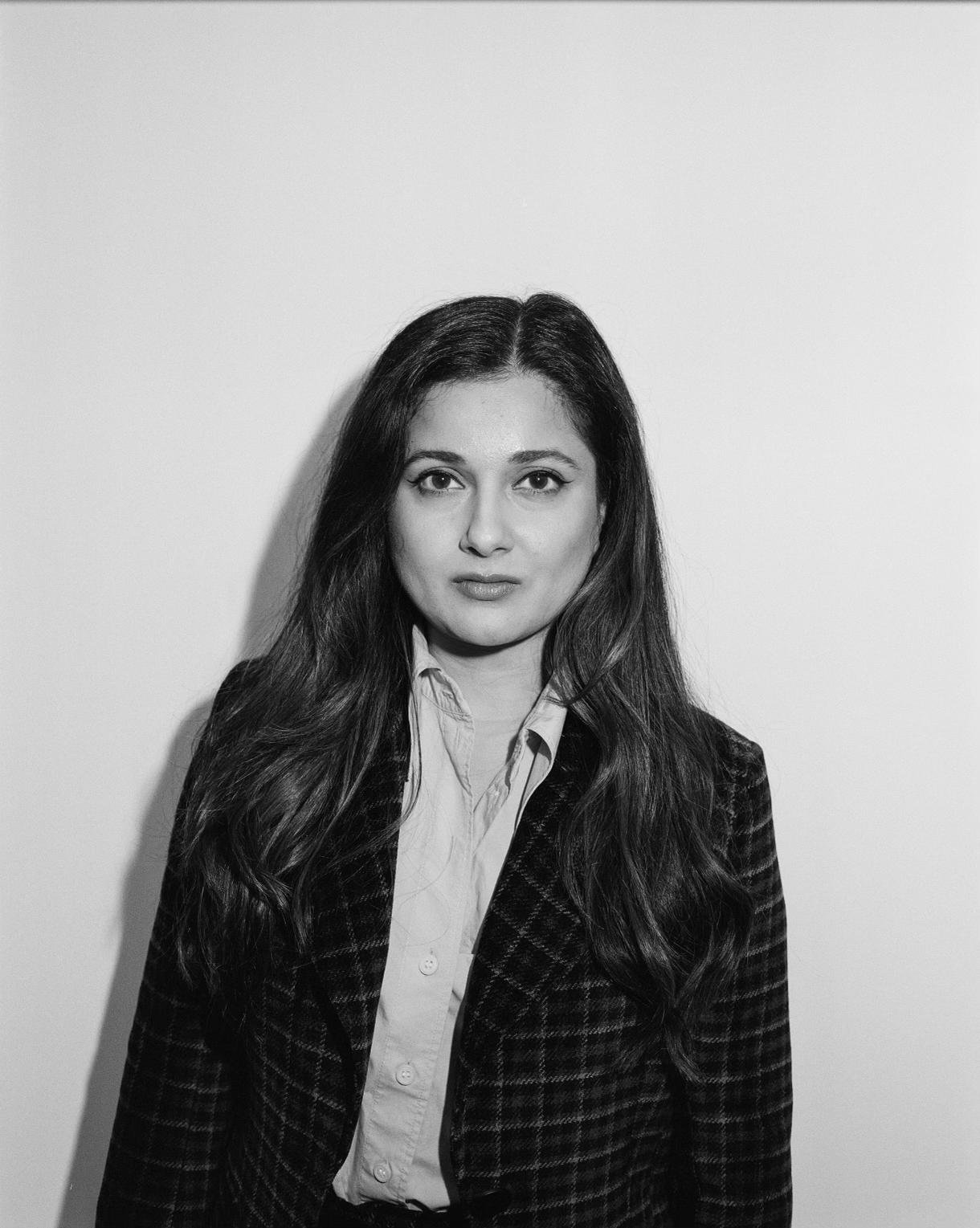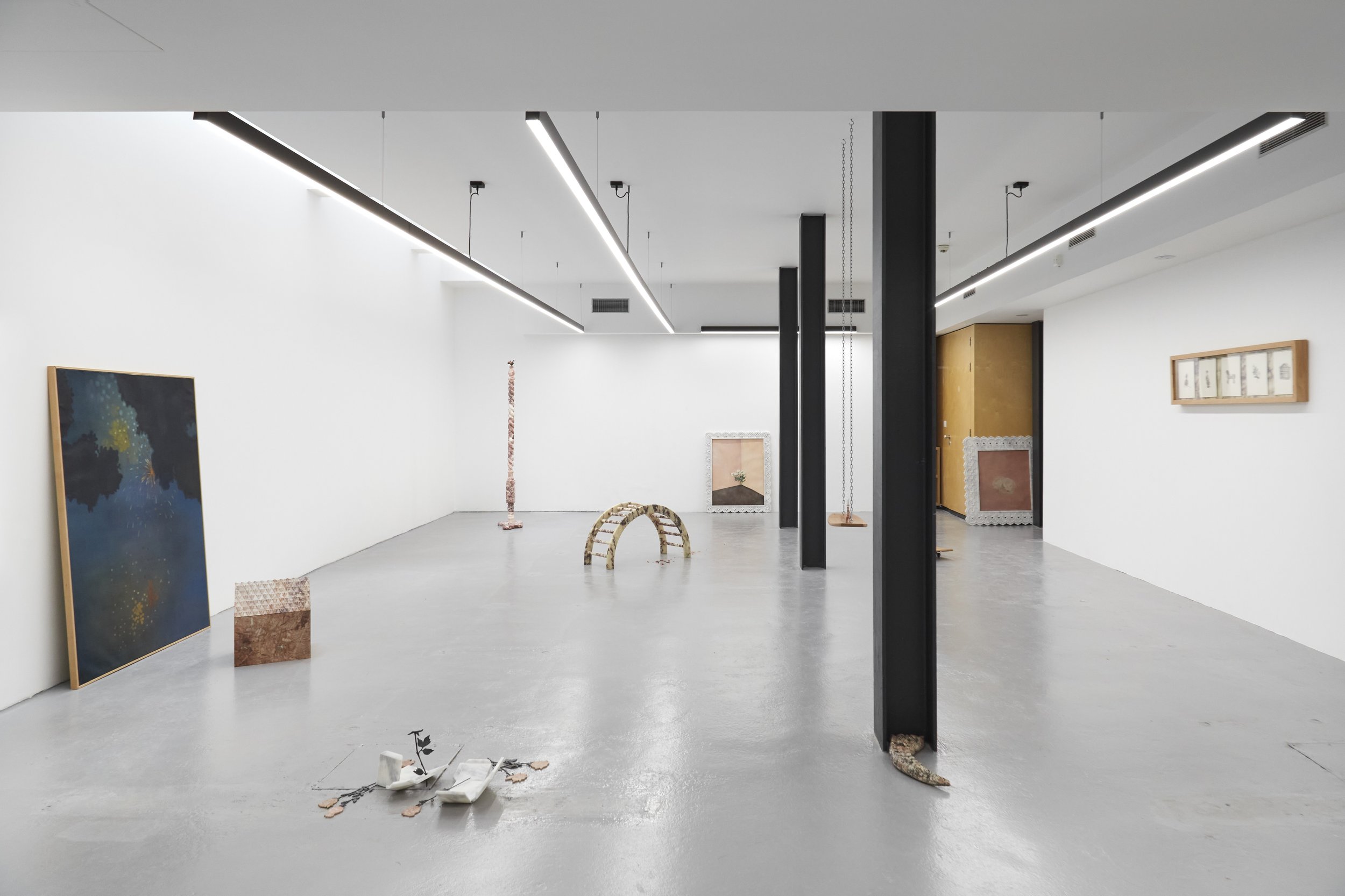Nabila Bulbul in Conversation with Krittika Sharma, Director of Indigo+Madder Gallery
Nestled next to the lush greenery of Lincoln’s Inn Fields, Indigo+Madder, the London-based contemporary art gallery was founded in 2019. From their inception, the gallery focused on representing and showcasing artists of the South Asian diaspora. Now they have expanded their program to showcase an even more diverse range of artists with a view towards generating cross-cultural discourse. Championing art from underrepresented groups, emerging artists and artists of colour, the gallery’s roster is a true blending pot, reflecting London’s rich diversity and cultural histories.
In this interview for MADE IN BED, Krittika Sharma, director of Indigo+Madder, sat down with Editor-in-Chief, Nabila Bulbul, to discuss the founding of the gallery and diversity in the arts.
Krittika Sharma Portrait. Photo Courtesy: Matthew Coles
Nabila Bulbul: Hi Krittika, thank you so much for taking the time to sit down with me. To start, I just wanted to know more about you to begin with. What's your background? How did you start out in the art world?
Krittika Sharma: I grew up in India and my earliest childhood memories are of making art alone for hours. For my undergraduate degree, I trained as an artist and had a studio practice for a while, but very quickly realised that I was more interested in (and better at) curating and putting things together! Subsequently I worked in South Asian textile archives for a few years.
I moved to Singapore and then eventually to London, to study art history at University of London where I focused on early Buddhist sculpture and gender studies. Back then, I was considering a career in academia (but wasn’t sure about it) and wanted to travel and move to London where a lot of primary material was based. Here, I looked at the figure of the Buddha as it evolved from 2nd cent AD and was surprised to discover a history of racist and transphobic research around it. That definitely made me interested in the contemporary context regarding the politics of the body and how it intersects with global power dynamics. Setting up a gallery seemed like one way of bringing together all my interests be part of something that felt relevant to me and my generation and says something about our current moment.
NB: My next question was about the gallery. What mission did you have going into this? What values and ideas did you want to bring to this gallery?
KS: I+M's programme has been exploring and forging links between South Asia and the UK since it was founded, which we would like to continue. My training as an artist and background in art history have also influenced the gallery's programme. I am very interested in multiplicity of meaning, cross-cultural perspectives and using art historical methodologies for situating artmaking within aesthetic, socio-political, geographical and historical contexts.
We show international and local artists that engage in transnational dialogue, and through their work, address contemporary challenges around race, gender, language and migration. As you can see from the programme, we also show a lot of women artists, which has always been important to me.
Also, the idea of ‘making space’ has always been of interest, it was very demoralising to feel out of place, and to hardly see any directors of colour heading cultural organisations and I couldn't see myself in that world. So, the gallery was also a way to make our own space and be involved in a sense of community building.
Installation View, Sameen Agha, Catalyst, 2024. Photo Couretsy: Sameen Agha and Indigo+Madder. Photography by Corey Bartle-Sanderson
NB: Like you mentioned, you don't see many senior leaders in the art world who look like us. Do you think that's impacted your leadership of this space? How have you found that experience?
KS: In the beginning I didn't think about this too much, in terms of my own impact through the running of a space, it was more about building something sustainable and making space. As I mentioned, I always remember feeling like there is no place for me here. It’s very white and euro-centric at the leadership level and if you don’t fit the mould, you feel out of place. But I’ve been thinking about this more and more as the gallery develops. The art world is always reproducing itself in its own image, but then what is my role in it as a woman of colour? I think it’s important to have spaces led by POCs, so that we don't just have performative diversity initiatives but more nuanced perspectives and conversations with artists and their work. Where people with different backgrounds can do their own world building and shift the current power dynamics.
NB: You also come from a Fine Art Background, so how did you find the transition into a business-led role?
KS: It was a steep learning curve! We scaled up slowly and run a really lean operation. While setting up the space, I did a short business programme as I didn’t want to run into financial difficulty – it was about recognising any shortfalls in experience. They don’t really teach you any financial skills in art school so there’s really no way to develop business acumen like that. In the beginning an established gallerist told me that the main reason galleries close is that they run out of money and I just wanted to make sure we always remain sustainable.
Sameen Agha, The dark felt beautiful, graphite on paper, nowshera marble, beechwood frame, 138 x 35 x 7 cm. Photo Courtesy: Sameen Agha and Indigo+Madder. Photography by Corey Bartle-Sanderson
NB: How do you find and connect with artists for your shows?
KS: Artists I work with often connect me or tell me about other artists, which is a really nice way to meet. I attend a lot of graduate shows and also Instagram has been a big connector, especially after covid. I think it’s a very individual process, with a lot of interpersonal dynamics involved. I love doing lots of studio visits, going out almost every week to become acquainted with new practices. You meet someone and respond to their work and feel like you want to talk about it.
NB: Do you represent your artists? What is the decision-making process behind that?
KS: We currently represent seven local and international artists and there will be some exciting announcements related to that soon! For emerging artists, long-term support is really critical and a relationship with a gallery in the form of representation is one way to approach it. The nature of representation is definitely changing as things become more collaborative and the nature of the art market keeps evolving, but the different types of support representation can offer and the potential of that relationship still has something to offer the artist.
NB: I’m sure it’ll be difficult to choose, but do you have any favourite shows you've done so far?
KS: I can’t really pick any favourites as every show marks an important part of the journey. Some of the early shows we did, were really exciting in the ways that they helped us explore community building through the exhibition format. Our second exhibition for example, in Enclave projects, was a group show about South Asian Futurism (called A plot for the multiverse) with works by Shiraz Bayjoo, Amba Sayal-Bennett, Harminder Judge, Hardeep Pandhal, Himali Singh Soin. It felt really exciting to explore this together with a young Indian curator and such a fantastic group of emerging artists. Our current show is a solo by Lahore-based Sameen Agha. She is brilliant and it’s her first international solo. We see the gallery as a space of discovery, where many of the artists we have shown, have had their first solo exhibition. We’re also looking forward to putting on more ambitious shows in the new space.
Noorain Inam, A house on a hill, a car in the middle of the sea, 2023. Acrylic, oil and ink on linen, 160 x 195 cm. Photo Courtesy: Noorain Inam and Indigo+Madder. Photography by Benjamin Deakin
NB: I'm interested in the demographics of the collectors who are interested in South Asian art. Who is paving the way in terms of collecting these works?
KS: This surprises a lot of people, but we hardly had any South Asian collectors in the beginning. We have always been a London-based gallery with a collector base largely hailing from Europe and America. There’s a new generation of South Asian origin collectors both from South Asia and its diasporas, that are now becoming very interested in collecting contemporary art, which is such an important cultural development.
NB: What do you envision for the future of the gallery?
KS: We are really excited to be in our new space, which used to be an architecture studio. We are in the Bloomsbury-Farringdon area, which has become quite an exciting cultural hub. Our new space will foster an expanded programme and more ambitious projects for the gallery. The 1200 sq ft ground floor gallery space incorporates industrial details with exposed steel beams, a concrete entrance, a wooden walled seating area and a space for outdoor sculpture.
NB: What do you think are some of the biggest challenges that young artists face and how do you think the gallery, and maybe the wider art world could help address these challenges?
KS: Currently with the cost of everything rising, lack of adequate studio spaces and budget cuts affecting funding sources, I think it’s very tough for artists. Galleries are not immune to economic conditions either and have their own set of challenges to overcome right now, which also of course affects artists. The support that galleries sometimes provide go beyond showing the work, sales, marketing etc and can also extend to help with admin and pastoral care, which is a really nice part of the relationship. Looking out for each other and understanding the unique circumstances within the art world, can help make life a bit easier.
Installation View, A plot for the multiverse, 2020. Photo Courtesy: Indigo+Madder. Photography by Benjamin Deakin
Many thanks to Krittika Sharma on behalf of MADE IN BED.
To find out more about Indigo+Madder Gallery, visit their website.
Nabila Bulbul
Editor-in-Chief, MADE IN BED






